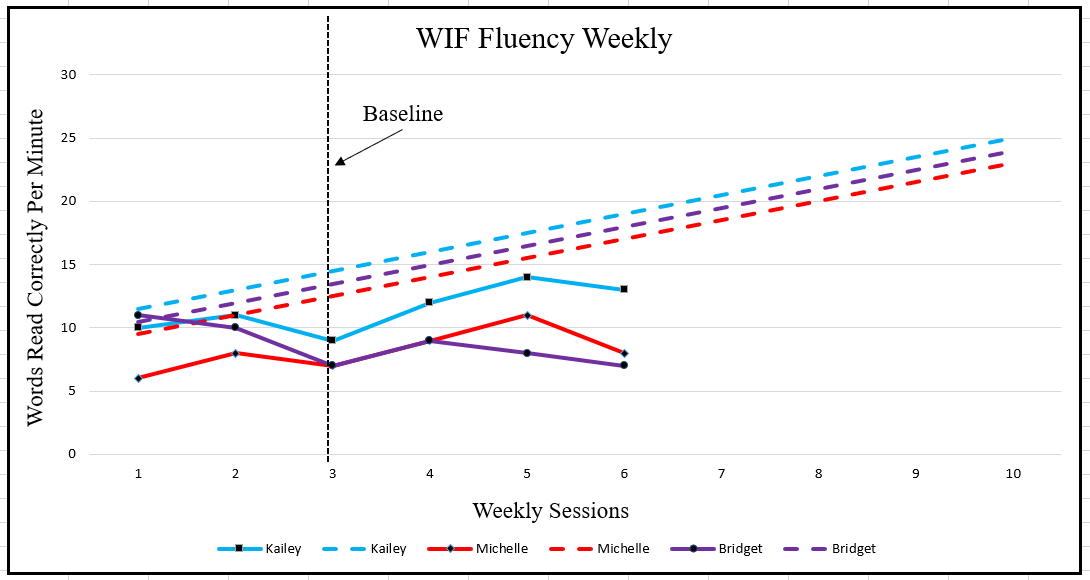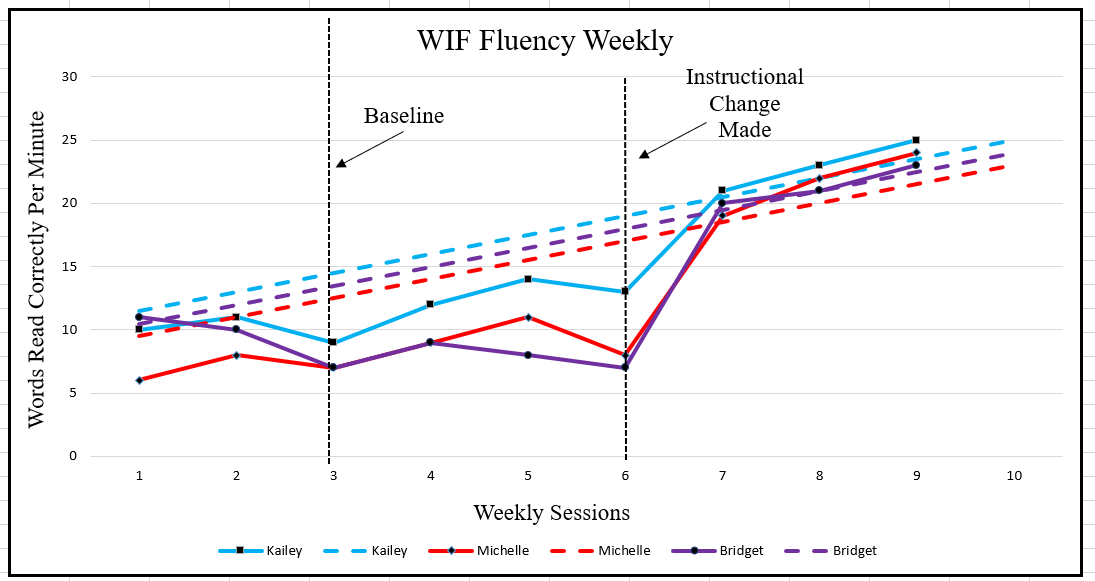Curriculum-Based Measurement Case Study Conclusion

Now that Miss Erickson and Mrs. Franks have seen that an instructional change is needed, let’s see how they change instruction and if it had an impact on their students outcomes.
Let’s see how Miss Erickson and Mrs. Franks adapt their instruction.
After collecting 3 weeks of progress monitoring data on the three students being tested on the WIF, Miss Erickson and Mrs. Franks look at the data. They see that while all 3 students have increased, the rate of increase is still below the trend line. Based upon this decision rules, an instructional change needs to be made.

|
Benchmark: |
Decision Rule: |
|
2nd Grade ORF |
4 points below the aim line |
|
1st Grade ORF |
3 points below the aim line |
|
WIF |
3 points below the aim line |
Miss Erickson and Mrs. Franks examine the words that the students have been consistently missing on their weekly WIF probes. They have identified that the students are struggling to read words with vowel teams and words with long vowels.
They have decided that during their ELA instruction, Mrs. Franks will run an intervention group with them. She will be working on specific instruction targeted to vowel teams and long vowels. She will also implement repeated reading of words that have vowel team and long vowels at the end of each sessions. She will record the students number of words read correctly for each read and work with them to set a goal for the number of words read per week.
They will implement this instructional change and then consults their data too see if the change is impacting the student scores.
After 3 weeks with the added instructional change, this is what the student’s data shows.

Miss Erickson and Mrs. Franks see that changing their instruction for these students is showing a positive impact on their WIF CBM scores. They will continue to graph and monitor the students progress every three weeks and apply their decision rules if needed.
Summary:
In conclusion, criterion-based measurement (CBM) is a process of using criterion-referenced probes to measure students progress on general outcome measures. CBM looks at seeing what level students apply knowledge on probes that look at more than isolated skills. CBM probes have standard administration rules and other school staff can easily be taught how to admister them. Graphing the CBM data, along with aim lines with the weekly rate of progress, can help to see if classroom instruction is impacting student outcomes.
To get started with Criterion-Based Measurement, consider visiting the Iris Center at Vanderbilt University and taking their free online module for using CBM in the classroom.
Click on the image below to access the Iris Module.
References:
Deno, S. L., & Fuchs, L. S. (1987). Developing curriculum-based measurement systems for data-based special education problem solving. Focus on Exceptional Children, 19(8), 1–16.
Hosp, M. K., Hosp, J. L., & Howell, K. W. (2007). The Guilford practical intervention in the schools series. The ABCs of CBM: A practical guide to curriculum-based measurement. New York, NY: Guilford Press.

